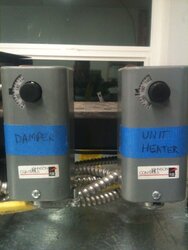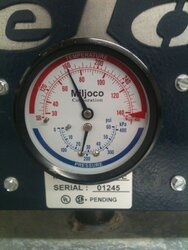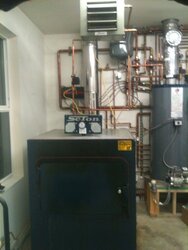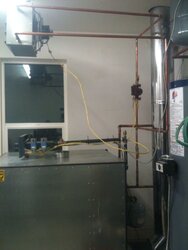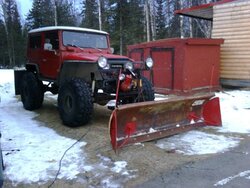Trzebs13
Member
First thing I would reccomend is turning your temps down. Go way down with them, maybe even more than 10 deg. You can always turn them up.
Sounds like it must be some kind of flow problem to me. when my basment floor turns on. Even if it just ran for awhile it will suck that temp down in a matter ov 30 seconds or so. How ever long as it takes the fluid from the floor to the boiler.
As for the Modine, this would act allot like my air exchanger above my furnace. That does drop the temps but, not anything like that massive concrete block at the bottom of my basment.
Are you getting any heat any where? Baseboards, basement etc? Really sonds like you ar not transfering your heat. If your not you definitly have a flow problem. Take some temp readings over by your exhangers and see if you are getting 200 deg water every where it runs. I am guessing your not.
Good Luck, you'll get it.
Sounds like it must be some kind of flow problem to me. when my basment floor turns on. Even if it just ran for awhile it will suck that temp down in a matter ov 30 seconds or so. How ever long as it takes the fluid from the floor to the boiler.
As for the Modine, this would act allot like my air exchanger above my furnace. That does drop the temps but, not anything like that massive concrete block at the bottom of my basment.
Are you getting any heat any where? Baseboards, basement etc? Really sonds like you ar not transfering your heat. If your not you definitly have a flow problem. Take some temp readings over by your exhangers and see if you are getting 200 deg water every where it runs. I am guessing your not.
Good Luck, you'll get it.


